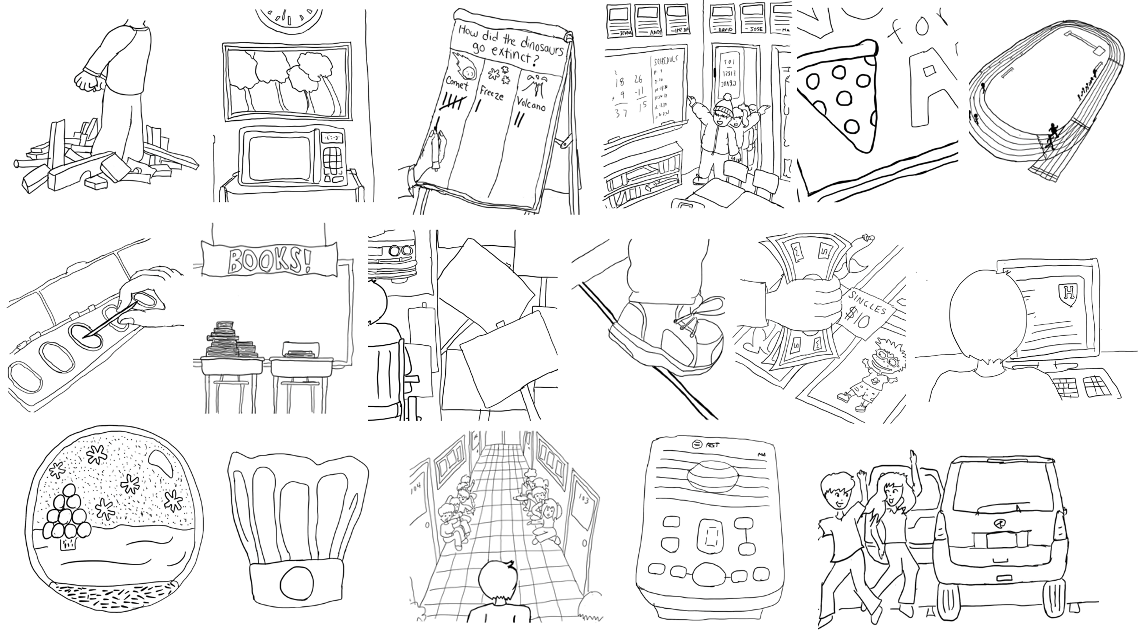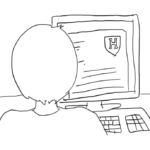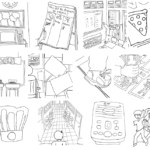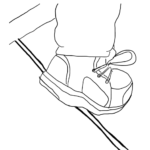This book started with a question. The question appeared one morning, seemingly out of nowhere, as I was getting ready for my day. I was making peanut butter toast like always. Then, all of a sudden, I thought:
What was the best lesson I learned in Kindergarten?
And then I thought: What was the best lesson I learned in First Grade?
My mind got carried away from there, and before I knew it, I was wondering about the best lesson I learned, every year that I was in school.
I guess it’s a little misleading to say that this question came out of nowhere, because I do think about lessons all the time. That’s kind of my job, after all! I’m an educator. I’ve been a teacher and a principal and a few other things, all related to school. So, I’ve spent a good fraction of my life in the company of lessons. I write lessons, I watch lessons, I teach lessons. I’ve worked with lessons on just about everything: how to blend vowels, how to solve ratios, how to draw portraits.
So, I guess it’s not so random that I started to wonder, mid-peanut-butter-scoop, about the best lessons I have learned in my own life.
You may not share my enthusiasm for lessons, and to be honest, I get that. I know that not all lessons are great. I’ve felt the boredom of watching teachers babble from podiums for hours on end. I’ve survived the dull torture of snail-paced “popcorn reading.” And I’ve known the existential dread of shuffling through mindless worksheets.
Still, I have to confess that, at the end of the day, I’m a believer in – and a lover of – lessons. When lessons are bad, they’re bad; but when they’re good, they’re the best. Few things excite me more than exceptional lessons. I know you’ve experienced those, too. Every now and then, a teacher, like an artist, comes up with a work of genius: a performance or an investigation or a debate that engages their students, and challenges them, and makes them see the world a little bit (or a lot) differently. Those are the kinds of lessons that I live for.
It’s not surprising at all, then, that I found myself chomping down on my peanut butter toast one morning, asking, again and again: what was the single best lesson I learned every year that I was in school?
The question haunted me. I thought about it all day at work, as I sat through tedious meetings. I thought about it as I cooked dinner, and ate dinner, and washed the dishes. I thought about it as I drifted off to sleep. And when I woke up, I was still thinking about it!
When a question behaves that way, I find that I really have no choice but to answer it. I decided to answer this question by writing. I made a list of the best lessons I remembered, and I wrote them down as stories. Some of these lessons really were fantastic. There was the time in second grade, when we built boats out of green clay, then threw them into buckets of water to see which ones would float. There was the time in fifth grade, when my favorite teacher explained improper fractions by drawing people with oversized sweatshirts and tight jeans. And there was, of course, that time during sophomore year, when I convinced my English teacher to cancel our final paper for Antigone and to let us hold a mock trial instead.
As my stories took shape, I imagined that I might share them someday. At first, I figured I would share them with teachers. I saw my essays as an ode to the magic of classroom instruction. I thought teachers might enjoy reading about the wonderful lessons I remembered. I also thought that they, and I, might learn something valuable about the nature of wonderful lessons along the way.
But as time went on, things got more complicated, as they often do with writing. Other memories began to surface. These memories were not from the classroom, but they showed up anyway. And boy, did they show up. These memories were loud and confident and stubborn. These memories claimed that they were, in fact, the best lessons of my life. They argued that they were more important than green clay boats and improper fractions and even Antigone’s trial. These memories argued their significance, not as moments of instruction, but as instructive moments. They said: “Get outside the classroom! Look over here! We are the lessons that mattered most!” In the end, I found these lessons too compelling to ignore.
So, I stepped outside of my old classrooms. I found myself walking down hallways, standing on stages, and jogging on tracks. I was dancing in empty parking lots. I was waiting in offices belonging to principals and therapists. I found myself learning – not about buoyancy or fractions, but about breaking rules and promises; about (not) seeing race and class; about chasing achievement and approval.
I found my most important lessons in unexpected places. I wrote them down, to learn what they might teach me.
As I wrote, I decided that I wanted to write for students instead of teachers. I can’t entirely say why. Maybe it’s because I felt more like a student as I wrote these essays. Maybe it’s just what the universe had in store. But I’m not mad about how the audience for this book developed. I’ve always preferred kids to adults, anyway – keep that between us, though I think you’ll find that most teachers feel the same.
So, here we go. In the pages that follow, you’ll find the best lesson I learned, every year that I was in school – back when I was growing up, racing in and out of classrooms, learning lessons all the time. Some of these lessons might strike you as funny, others as sad. Some might feel strange, others familiar. However they land, I hope that my lessons will help you to think about your own. I suspect that your lessons are, like mine, rich and complex and weird and worth a good deal of thought, whether they just happened, or whether they happened a long time ago. I believe any of our best lessons become stories worth sharing.



